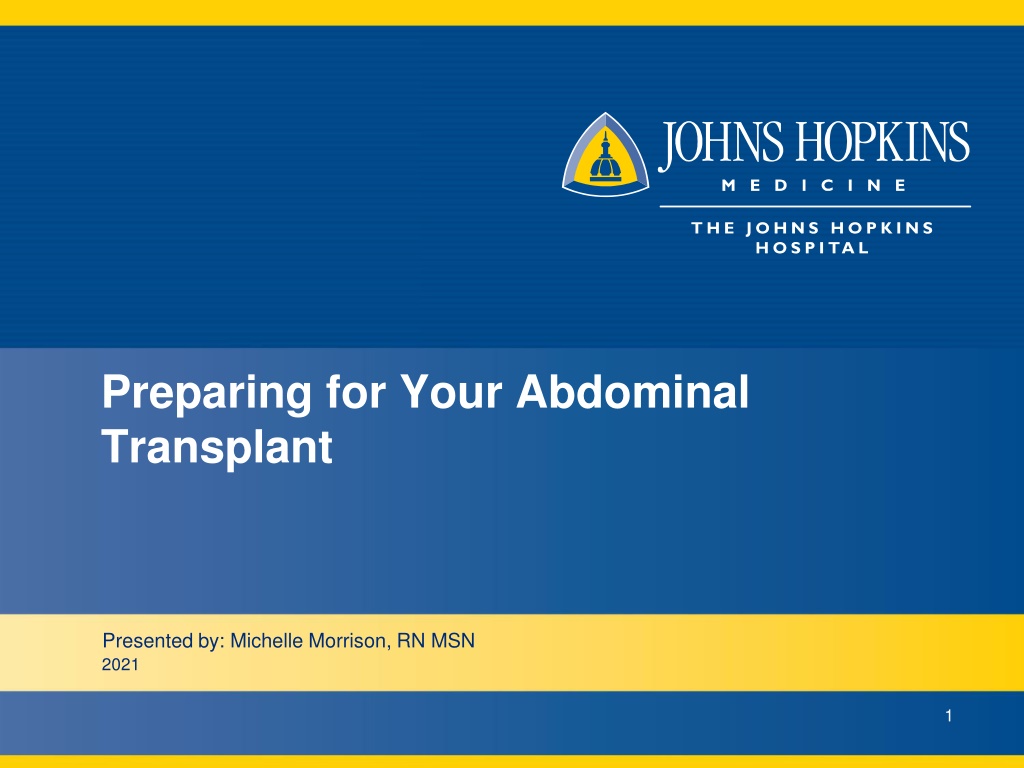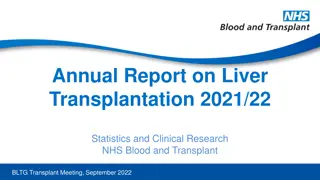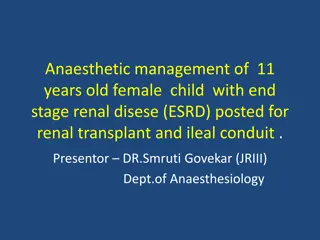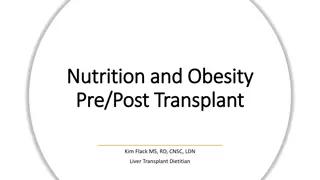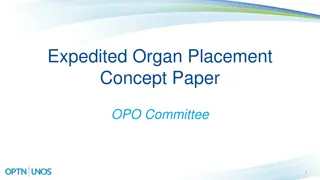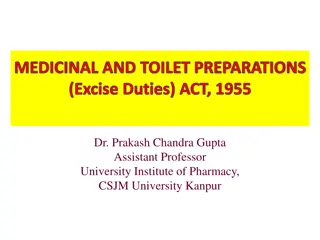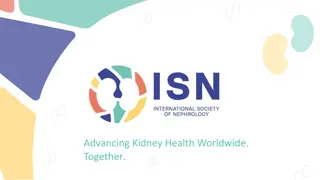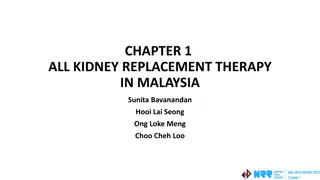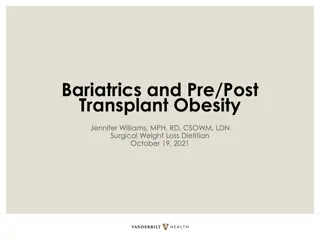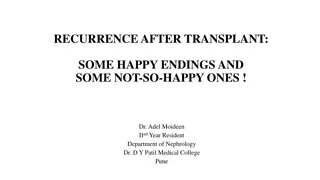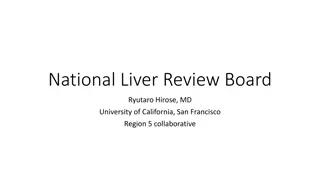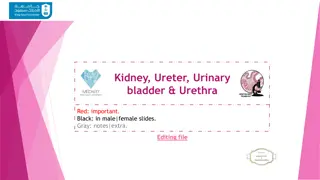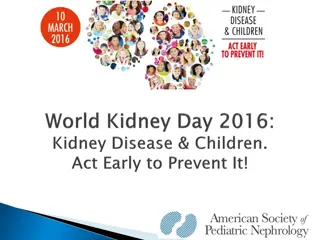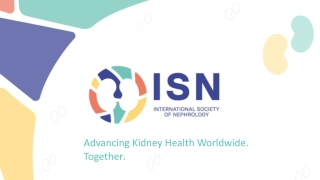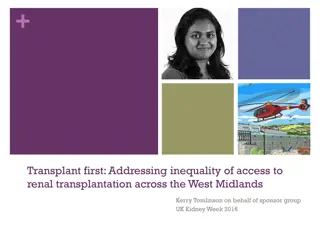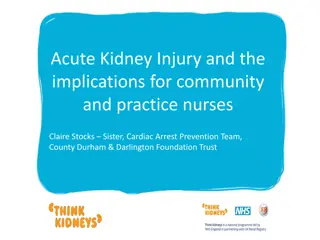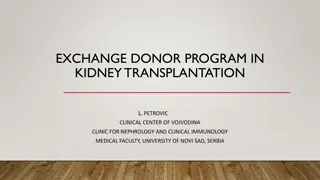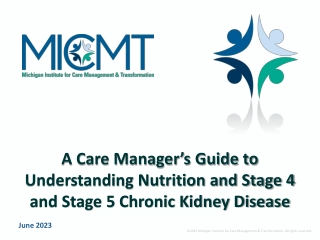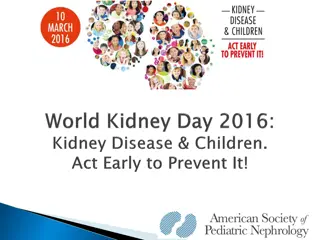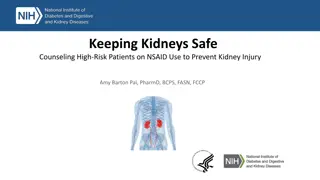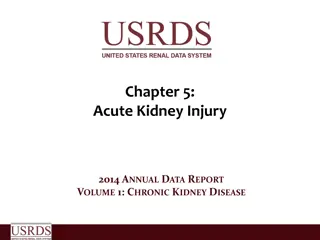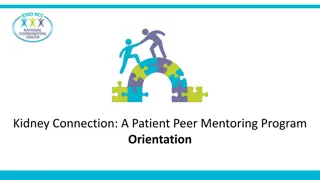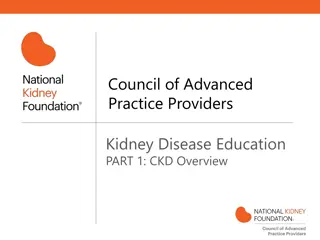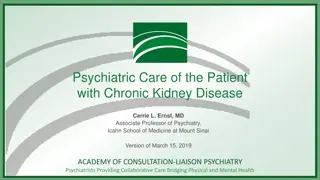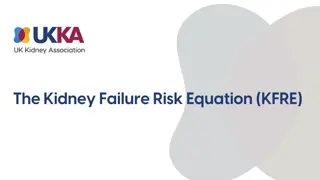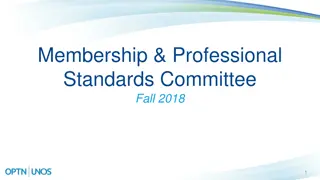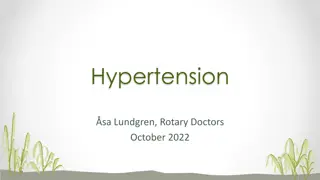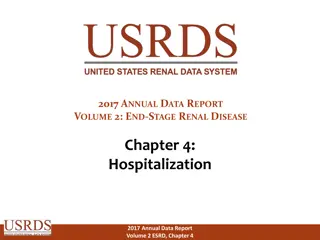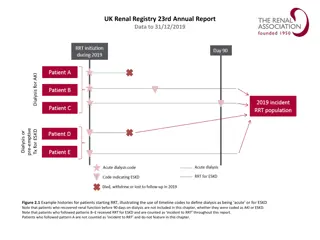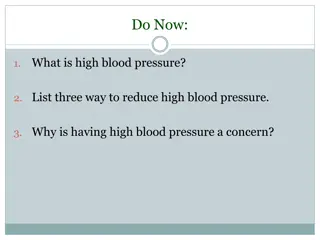Comprehensive Guide to Kidney Transplant: Preparations, Benefits, and Risks
Explore the essential aspects of kidney transplantation, including the significance of kidneys, types of abdominal transplants, fast facts about kidney transplants, benefits, risks, and the kidney transplant waitlist process. Gain insights into the importance of kidney health, the waiting list statistics, and the considerations for undergoing a kidney transplant procedure.
Download Presentation

Please find below an Image/Link to download the presentation.
The content on the website is provided AS IS for your information and personal use only. It may not be sold, licensed, or shared on other websites without obtaining consent from the author. Download presentation by click this link. If you encounter any issues during the download, it is possible that the publisher has removed the file from their server.
E N D
Presentation Transcript
Preparing for Your Abdominal Transplant Presented by: Michelle Morrison, RN MSN 2021 1
Types of Abdominal Transplants Kidney Transplant Pancreas Transplant Liver Transplant 2
Why are my kidneys so important? Remove waste products from the body Remove drugs from the body Balance the body's fluids Release hormones that regulate blood pressure Produce an active form of vitamin D that promotes strong, healthy bones Control the production of red blood cells 4
Kidney Transplant Fast Facts 99,000 people are waiting for a kidney transplant in the United States (2020) Average wait time for deceased donor kidney transplant is 3 to 6 years Each year, 5,000 people die while waiting for a kidney transplant >20,000 kidney transplants are preformed annually 5
Benefits, Risks and Alternatives Benefits Longer survival Improved quality of life Live life without the requirement of dialysis Overall feel better Risks Surgical procedure Lifelong immunosuppressant medication Risk of rejection, malignancy, infection, graft failure, and death 6
Kidney Transplant Waitlist Waitlist Status Active (Status 1) Cleared for organ offers, accruing time Inactive (Status 7) Accruing time, but not eligible for organs offers, possibly due to pending tests or current medical, financial or psychosocial status Not a candidate Possible contraindications: advanced cardiovascular disease, active malignancy, active substance abuse, or a prohibitively high Body Mass Index ( BMI) Once listed as Active (Status 1) on the Wait List you must make certain your blood sample (tissue typing sample) is sent to the Johns Hopkins Immunogenetics Lab. It will be determined by the Transplant team how frequent your sample should be sent. Without a current sample you could risk delay of your transplant. A letter with detailed information will follow once you are made active on the list. 7
Live Donor Kidney Transplant The Gift of Life You don t need to have the same blood type to donate Types: o Direct Donation o Non-Direct Donation (Altruistic) o Paired Kidney Exchange (Swap)
How Do I Find a Live Donor? Share your STORY!! 'The Donor App' Website: Sign up and list Johns Hopkins as the Transplant Center and you will be called for further instructions. This app will help you write and share your story. Social media platforms: Encourage your friends/family to share through their social media platforms to increase the number of people that see your story Johns Hopkins Donor Team Contact Information 410-614-3873 https://www.hopkinsmedicine.org/transplant/programs/kidney/living_donors/ 9
Kidney Transplant Organ Offers Allocated based on how longyou ve waited on the waitlist (driven by date of first dialysis) If you are called for an organ offer, keep in mind that a few other patients are called as well: o Target patient o Back up to the target patient At times, patients are called in to the hospital for tight time constraints but later discharged o Surgeons may view the organ upon arrival and decide that it is not transplantable o You may be brought in as a backup and never get the organ o No penalty for declining an offer! 10
Preparing for AFTER your Kidney Transplant New medications JP drains Hospital stay 4-7 days Assigned a nurse coordinator Follow up appointment schedule: daily, weekly, monthly Females and Males of reproductive potential should consult their transplant team prior to pregnancy due to the increased risk of birth defects while taking immunosuppressive medications Deceased Donor Kidney Transplants can last an average of 11.7 years Live Donor Kidney Transplants can last an average of 19.2 years 11
Indications for Pancreas Transplant Simultaneous Kidney and Pancreas Transplant (SPK) Blood sugar swings from high to low, often without warning Frequent admissions to the hospital for diabetic ketoacidosis Average wait time of 1 year Pancreas Transplant Alone (PTA) A pancreas-only transplant is performed on patients with type I diabetes and no kidney problems. Pancreas After Kidney Transplant (PAK) Sometimes, a patient who has type I diabetes and end stage renal disease will have a living kidney donor. In this case, the kidney transplant is performed first, using the living donor's kidney. Then, the patient waits for a deceased donor pancreas to become available. 13
Why is my liver so important? Metabolism (major player) Glucose regulation Triglyceride production Protein degradation Digestion Produces & Excretes Bile Storage Glycogen Vitamin A, D & B-12 Iron, Copper Immunologic Reticuloendothelial system Synthesis Plasma proteins (albumin, etc.) Coagulation factors Hormones- thrombopoietin, insulin- like growth factor 1, angiotensinogen Breakdown/Modification Bilirubin conjugated Insulin & other hormones catabolized Toxins- methylated or conjugated into harmless forms Drug metabolism- conjugated/oxidized into active forms 15
Indications for Liver Transplant Severe fatigue Unacceptable quality of life Recurrent variceal bleeding Intractable ascites Recurrent or severe hepatic encephalopathy Spontaneous bacterial peritonitis Hepatorenal syndrome Development of hepatocellular carcinoma on hepatic imaging 16
Liver Transplant Waitlist UNOS-United Network for Organ Sharing Manages national transplant waiting list, matching donors to recipients 24/7 Develops policies for best use of scarce resources and to promote fairness Educates professional groups and public about organ donation Maintains database to develop policies, make improvements, help patients make decisions 17
Liver Transplant Organ Offers: MELD Score Driven by MELD Score Model for End Stage Liver Disease Developed by Mayo clinic and implemented in 2002 Based on objective factors: serum sodium, total bilirubin, PT/INR, serum creatinine Score is an estimate of the patient s risk of mortality in the next 3 months Range from 6-40 Three month mortality 40 or more 71.3% mortality 30 39 52.6% mortality 20 29 19.6% mortality 10 19 6.0% mortality <9 1.9% mortality 18
Preparing for AFTER your Liver Transplant New medications JP drains Hospital stay: 7-10 days Follow up appointment schedule: daily, weekly, monthly According to UNOS (United Network for Organ Sharing), about 85 to 90% of people who have liver transplants will be alive one year later. Approximately 75 to 85% of people will survive at least five years after a transplant. 19
Common Complications After Liver Transplant Bleeding, coagulopathy, thrombocytopenia Hepatic Artery or Portal Vein Thrombosis Hypotension Bile leaks Altered mental status Acute kidney injury, renal failure Fluid, electrolyte imbalance Dehiscence Graft Thrombosis Graft Rejection Ascites Infections Seizures Failure to thrive Recurrent disease HCV Return to alcohol 20
Contact Information Interested in being evaluated? Have questions? Please contact me: Michelle Morrison 410-614-3873 MCOE4@jhmi.edu 21
